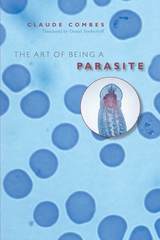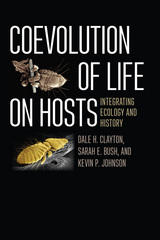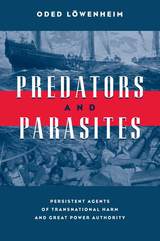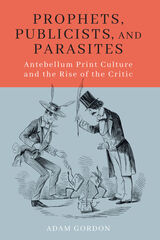4 books about Parasites

The Art of Being a Parasite
Claude Combes
University of Chicago Press, 2005
Parasites are a masterful work of evolutionary art. The tiny mite Histiostoma laboratorium, a parasite of Drosophila, launches itself, in an incredible display of evolutionary engineering, like a surface-to-air missile at a fruit fly far above its head. Gravid mussels such as Lampsilis ventricosa undulate excitedly as they release their parasitic larval offspring, conning greedy predators in search of a tasty meal into hosting the parasite.
The Art of Being a Parasite is an extensive collection of these and other wonderful and weird stories that illuminate the ecology and evolution of interactions between species. Claude Combes illustrates what it means to be a parasite by considering every stage of its interactions, from invading to reproducing and leaving the host. An accessible and engaging follow-up to Combes's Parasitism, this book will be of interest to both scholars and nonspecialists in the fields of biodiversity, natural history, ecology, public health, and evolution.
The Art of Being a Parasite is an extensive collection of these and other wonderful and weird stories that illuminate the ecology and evolution of interactions between species. Claude Combes illustrates what it means to be a parasite by considering every stage of its interactions, from invading to reproducing and leaving the host. An accessible and engaging follow-up to Combes's Parasitism, this book will be of interest to both scholars and nonspecialists in the fields of biodiversity, natural history, ecology, public health, and evolution.
[more]

Coevolution of Life on Hosts
Integrating Ecology and History
Dale H. Clayton, Sarah E. Bush, and Kevin P. Johnson
University of Chicago Press, 2015
For most, the mere mention of lice forces an immediate hand to the head and recollection of childhood experiences with nits, medicated shampoos, and traumatic haircuts. But for a certain breed of biologist, lice make for fascinating scientific fodder, especially enlightening in the study of coevolution. In this book, three leading experts on host-parasite relationships demonstrate how the stunning coevolution that occurs between such species in microevolutionary, or ecological, time generates clear footprints in macroevolutionary, or historical, time. By integrating these scales, Coevolution of Life on Hosts offers a comprehensive understanding of the influence of coevolution on the diversity of all life.
Following an introduction to coevolutionary concepts, the authors combine experimental and comparative host-parasite approaches for testing coevolutionary hypotheses to explore the influence of ecological interactions and coadaptation on patterns of diversification and codiversification among interacting species. Ectoparasites—a diverse assemblage of organisms that ranges from herbivorous insects on plants, to monogenean flatworms on fish, and feather lice on birds—are powerful models for the study of coevolution because they are easy to observe, mark, and count. As lice on birds and mammals are permanent parasites that spend their entire lifecycles on the bodies of their hosts, they are ideally suited to generating a synthetic overview of coevolution—and, thereby, offer an exciting framework for integrating the concepts of coadaptation and codiversification.
Following an introduction to coevolutionary concepts, the authors combine experimental and comparative host-parasite approaches for testing coevolutionary hypotheses to explore the influence of ecological interactions and coadaptation on patterns of diversification and codiversification among interacting species. Ectoparasites—a diverse assemblage of organisms that ranges from herbivorous insects on plants, to monogenean flatworms on fish, and feather lice on birds—are powerful models for the study of coevolution because they are easy to observe, mark, and count. As lice on birds and mammals are permanent parasites that spend their entire lifecycles on the bodies of their hosts, they are ideally suited to generating a synthetic overview of coevolution—and, thereby, offer an exciting framework for integrating the concepts of coadaptation and codiversification.
[more]

Predators and Parasites
Persistent Agents of Transnational Harm and Great Power Authority
Oded Löwenheim
University of Michigan Press, 2007
What explains variance in the policy of Great Powers toward drug traffickers, pirates, and terrorists? Does counterharm policy depend just on the degree of material harm caused to a powerful state by such nonstate actors, or do normative, moral, and emotional factors also play a role? Why did the U.S., for example, harshly punish al Qaeda after 9/11 but avoid taking similar forceful measures against foreign drug traffickers who enable the deaths of thousands of Americans each year by selling highly illegal and harmful narcotics? Oded Löwenheim argues that the answers to these questions lie in the social construction of agents of harm.
"Predators and Parasites shows, with impressive scholarship, that world politics is characterized by a cartel-like structure that gives states monopolies of legitimate violence. Sovereignty and a global structure of authority are not mutually exclusive. In a sense, anarchy is in the eye of the beholder."
—Robert O. Keohane, Princeton University
—Robert O. Keohane, Princeton University
"An invaluable contribution to the growing body of constructivist literature in international relations and should be read by anyone interested in the use of force in contemporary global politics . . . Goes a long way toward explaining America's War on Terror against al Qaeda and the Taliban and the widespread global support for this policy, as well as the highly negative global reaction to America's own intervention in Iraq and its norm-threatening doctrine of preemption."
—Richard W. Mansbach, Iowa State University
"Prepare to be boarded! Löwenheim delivers an essential constructivist tutorial on Great Power sovereignty and authority. An intellectual swashbuckler!"
—Rodney Bruce Hall, Oxford University
—Rodney Bruce Hall, Oxford University
"Rejecting preventive war for moral consistency and just conduct, a fascinating discussion of pirates, terrorists, and revenge."
—Jon Mercer, University of Washington
Oded Löwenheim is Lecturer in the Department of International Relations at the Hebrew University of Jerusalem.
[more]

Prophets, Publicists, and Parasites
Antebellum Print Culture and the Rise of the Critic
Adam Gordon
University of Massachusetts Press, 2020
Print culture expanded significantly in the nineteenth century due to new print technologies and more efficient distribution methods, providing literary critics, who were alternately celebrated and reviled, with an ever-increasing number of venues to publish their work. Adam Gordon embraces the multiplicity of critique in the period from 1830 to 1860 by exploring the critical forms that emerged. Prophets, Publicists, and Parasites is organized around these sometimes chaotic and often generative forms and their most famous practitioners: Edgar Allan Poe and the magazine review; Ralph Waldo Emerson and the quarterly essay; Rufus Wilmot Griswold and the literary anthology; Margaret Fuller and the newspaper book review; and Frederick Douglass's editorial repurposing of criticism from other sources. Revealing the many and frequently competing uses of criticism beyond evaluation and aesthetics, this insightful study offers a new vision of antebellum criticism, a new model of critical history, and a powerful argument for the centrality of literary criticism to modern life.
[more]
READERS
Browse our collection.
PUBLISHERS
See BiblioVault's publisher services.
STUDENT SERVICES
Files for college accessibility offices.
UChicago Accessibility Resources
home | accessibility | search | about | contact us
BiblioVault ® 2001 - 2024
The University of Chicago Press









